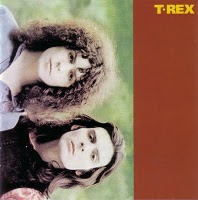 First Tyrannosaurus Rex release featuring the shortened moniker, T. Rex balances Bolan’s brain-fried, hippie-folk mysticism with a pop sensibility that would explode in T-Rexstacy, once he figured out this stuff might sound better with bass and drums. Of course, Bolan could craft a killer hook in his sleep, and T. Rex is full of them, be it on tender numbers like “Diamond Meadows,” close encounter of “The Visit,” electric freak out “Jewel,” or glam boogie previews like “One Inch Rock,” many numbers benefiting especially well from added string accompaniment. Highly recommended to anyone wanting to dig deeper than “Electric Warrior.” –Ben
First Tyrannosaurus Rex release featuring the shortened moniker, T. Rex balances Bolan’s brain-fried, hippie-folk mysticism with a pop sensibility that would explode in T-Rexstacy, once he figured out this stuff might sound better with bass and drums. Of course, Bolan could craft a killer hook in his sleep, and T. Rex is full of them, be it on tender numbers like “Diamond Meadows,” close encounter of “The Visit,” electric freak out “Jewel,” or glam boogie previews like “One Inch Rock,” many numbers benefiting especially well from added string accompaniment. Highly recommended to anyone wanting to dig deeper than “Electric Warrior.” –Ben
Album Reviews
Ananda Shankar “Ananda Shankar And His Music” (1975)
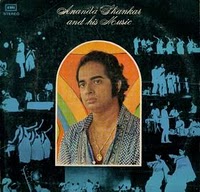 A scorching soundclash that mixes western funk and fusion with traditional Indian music to stunning effect. The result is some of the funkiest and out-there music from the 70’s. Mad sitar playing, buzzing electronic effects and heavy use of percussion and a non-stop groove makes for some great listening. This is cross-cutural music of the highest order that pandered to no fashions and managed to avoid sounding contrived. High on energy and catchy riffs as well as a good insight into more traditional Indian sounds. –Jon
A scorching soundclash that mixes western funk and fusion with traditional Indian music to stunning effect. The result is some of the funkiest and out-there music from the 70’s. Mad sitar playing, buzzing electronic effects and heavy use of percussion and a non-stop groove makes for some great listening. This is cross-cutural music of the highest order that pandered to no fashions and managed to avoid sounding contrived. High on energy and catchy riffs as well as a good insight into more traditional Indian sounds. –Jon
Ravi Shankar’s nephew, Ananda, fuses traditional Indian music with heavy psych-funk creating one of the best “Indo-fusion” albums of all time! –David
Hal Blaine & The Young Cougars “Deuces, T’s, Roadsters, & Drums” (1963)
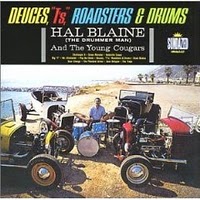 For those who don’t know, Mr. Blaine was a session drummer, and, though you might not recognize his name, many drummers of the early ’60s, considered him their “Chet Atkins!” Well, with his solo LP he gets down on some heavy instrumental, Hot Rod heat. For me, this is one of the better, more inventive, Hot Rod records as DTR&D is royally executed by the top LA session fellas. The list of “Young Cougars” is as long as my right arm, and DTR&D is produced in bright, booming ’60’s “Soundtrack” clarity by Lee Hazelwood. Oh, there’s even a handy “hot rod” lexicon featured in the liner notes, now I know what “E.T.” really stands for! –Nipper
For those who don’t know, Mr. Blaine was a session drummer, and, though you might not recognize his name, many drummers of the early ’60s, considered him their “Chet Atkins!” Well, with his solo LP he gets down on some heavy instrumental, Hot Rod heat. For me, this is one of the better, more inventive, Hot Rod records as DTR&D is royally executed by the top LA session fellas. The list of “Young Cougars” is as long as my right arm, and DTR&D is produced in bright, booming ’60’s “Soundtrack” clarity by Lee Hazelwood. Oh, there’s even a handy “hot rod” lexicon featured in the liner notes, now I know what “E.T.” really stands for! –Nipper
Blue Öyster Cult “Blue Öyster Cult” (1972)
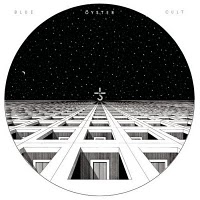 Long before the mega-hits “Godzilla” and “(Dont Fear) The Reaper” roamed FM radio waves there lived a different kind of creature: “Blue Öyster Cult” the album. Everything about BÖC is unique: from their mysterious name, the umlaut over the Ö and the famous hook and cross logo to the cryptic lyrics and their instantly recognizable sound. Nowhere is their uniqueness more apparent than on this classic self-titled debut. The music lies somewhere between psychedelia and heavy metal and the cover features black and white op-art that perfectly captures the sci-fi and horror themes inside. My favorite tracks are the classic “Cities on Flame with Rock and Roll,” the tripped out “Screams,” the even trippier “She’s as Beautiful as a Foot” and the country-rock of “Redeemed” with it’s beautiful harmonies. All I can say is: “More Cowbell!” –David
Long before the mega-hits “Godzilla” and “(Dont Fear) The Reaper” roamed FM radio waves there lived a different kind of creature: “Blue Öyster Cult” the album. Everything about BÖC is unique: from their mysterious name, the umlaut over the Ö and the famous hook and cross logo to the cryptic lyrics and their instantly recognizable sound. Nowhere is their uniqueness more apparent than on this classic self-titled debut. The music lies somewhere between psychedelia and heavy metal and the cover features black and white op-art that perfectly captures the sci-fi and horror themes inside. My favorite tracks are the classic “Cities on Flame with Rock and Roll,” the tripped out “Screams,” the even trippier “She’s as Beautiful as a Foot” and the country-rock of “Redeemed” with it’s beautiful harmonies. All I can say is: “More Cowbell!” –David
Archie Shepp “Attica Blues” (1972)
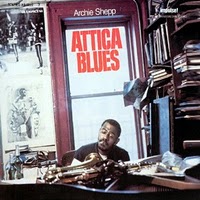 Thunderous, joyous, angry, sad beautiful and swinging. All of this in forty minutes of music from Shepp. This is a remarkable record that has so many flavors. The free jazz of his earlier work is replaced by gospel, blues and R&B. The opener is an all out assault that literally screams from the speakers. The fact that his can be followed by a ballad of such tenderness as Steam shows the genius of Shepp. Human rights form a common theme throughout and may explain some of the energy within. Shepp himself sounds so much more fulfilling in a bluesy role. –Jon
Thunderous, joyous, angry, sad beautiful and swinging. All of this in forty minutes of music from Shepp. This is a remarkable record that has so many flavors. The free jazz of his earlier work is replaced by gospel, blues and R&B. The opener is an all out assault that literally screams from the speakers. The fact that his can be followed by a ballad of such tenderness as Steam shows the genius of Shepp. Human rights form a common theme throughout and may explain some of the energy within. Shepp himself sounds so much more fulfilling in a bluesy role. –Jon
Seriously funky! The title track makes Sly Stone look like Kenny Rogers. The rest reminds me of Gil Scott-Heron occasionally straying into freaky Melvin Van Peebles territory. Expecting jazz, this album really blew my mind the first time I heard it. –David
Guided by Voices “Bee Thousand” (1994)
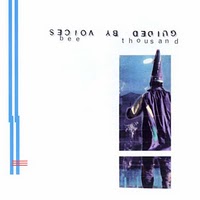 Their best album, without question: an inspired amalgam of a particularly British rock history (Bob even puts on the accent, though with a charming lack of consistency that recalls Sir Alex Chilton rather than other lesser American poseurs): channelling Who mod aggression, late-60s Kinks nostalgia, Revolver’s kitchen-sink aesthetic, and post-punk collage sensibilities, this was the album that got GBV out of a Dayton, OH basement, and I bet it’s the one that’ll be played 20 years from now. I know, I know, Alien Lanes is arguably more varied and better paced. But Pollard never wrote a better set of lyrics than here (his random strings of sentiment pile up into something more significant here than they tend to do), and the hooks are seemingly effortless. The ultra lo-fi recording reveals layered detail, and the opening three tracks here qualify among the best sequences in pop history: “Hardcore UFOs” is one of the only rock anthems of the last 30 years that packs any emotional punch, while “Tractor Rape Chain” sounds like Neil Young & Crazy Horse in some parallel universe where they hailed from Leeds. And littered throughout this 20-song tunefest are many of their other best songs: “Gold Star for Robot Boy” is a mod anti-authority song for the slacker generation; the deranged but dead-on “Her Psychology Today” resurrects classic-rock misogyny for the era of the institutionalized sensitive male and the powerbook feminist; and “Kicker of Elves,” well, what the hell is “Kicker of Elves?” Pop bliss in a minute. God Bless Guided By Voices and the Lager-Soaked Four-Track They Sailed In On. –Will
Their best album, without question: an inspired amalgam of a particularly British rock history (Bob even puts on the accent, though with a charming lack of consistency that recalls Sir Alex Chilton rather than other lesser American poseurs): channelling Who mod aggression, late-60s Kinks nostalgia, Revolver’s kitchen-sink aesthetic, and post-punk collage sensibilities, this was the album that got GBV out of a Dayton, OH basement, and I bet it’s the one that’ll be played 20 years from now. I know, I know, Alien Lanes is arguably more varied and better paced. But Pollard never wrote a better set of lyrics than here (his random strings of sentiment pile up into something more significant here than they tend to do), and the hooks are seemingly effortless. The ultra lo-fi recording reveals layered detail, and the opening three tracks here qualify among the best sequences in pop history: “Hardcore UFOs” is one of the only rock anthems of the last 30 years that packs any emotional punch, while “Tractor Rape Chain” sounds like Neil Young & Crazy Horse in some parallel universe where they hailed from Leeds. And littered throughout this 20-song tunefest are many of their other best songs: “Gold Star for Robot Boy” is a mod anti-authority song for the slacker generation; the deranged but dead-on “Her Psychology Today” resurrects classic-rock misogyny for the era of the institutionalized sensitive male and the powerbook feminist; and “Kicker of Elves,” well, what the hell is “Kicker of Elves?” Pop bliss in a minute. God Bless Guided By Voices and the Lager-Soaked Four-Track They Sailed In On. –Will
Willie Nelson “Shotgun Willie” (1973)
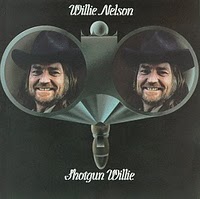 Classic outlaw country music, this record is polar opposite of the Nashville “songwriting machine” still so popular at the time. Honest (maybe too honest, the first words of this record are “Shotgun Willie sits around in his underwear”), loose and written and performed with a “don’t give a f…” attitude that millions fell in love with and thousands tried to emulate. “Sad Songs and Waltzes” and “She’s Not For You” are bruised ballads that stick with you after one listen, and age gracefully in your mind. –Cameron
Classic outlaw country music, this record is polar opposite of the Nashville “songwriting machine” still so popular at the time. Honest (maybe too honest, the first words of this record are “Shotgun Willie sits around in his underwear”), loose and written and performed with a “don’t give a f…” attitude that millions fell in love with and thousands tried to emulate. “Sad Songs and Waltzes” and “She’s Not For You” are bruised ballads that stick with you after one listen, and age gracefully in your mind. –Cameron
Harry Nilsson “Nilsson Sings Newman” (1970)
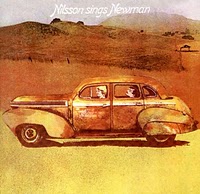 Delicate, gentle and earnest, it’s hard not to believe every word Harry Nilsson sings, even if a yet-to-make-it-big Randy Newman wrote them. I challenge any man with a heart to remain dry eyed during his rendition of “Living Without You.” Plus, this is one of the most technically amazing recordings ever (it won 1970’s Record of the Year award from Stereo Review Magazine), and a treat on headphones. –Cameron
Delicate, gentle and earnest, it’s hard not to believe every word Harry Nilsson sings, even if a yet-to-make-it-big Randy Newman wrote them. I challenge any man with a heart to remain dry eyed during his rendition of “Living Without You.” Plus, this is one of the most technically amazing recordings ever (it won 1970’s Record of the Year award from Stereo Review Magazine), and a treat on headphones. –Cameron
Mighty Baby “Mighty Baby” (1969)
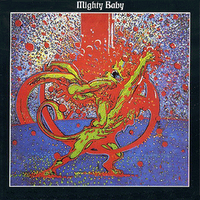 Most of the members of Mighty Baby began in The Action, a Scouse soul/R&B group, and slowly evolved, as their hair and beards grew and thier minds expanded, into Mighty Baby. Mighty, indeed!
Most of the members of Mighty Baby began in The Action, a Scouse soul/R&B group, and slowly evolved, as their hair and beards grew and thier minds expanded, into Mighty Baby. Mighty, indeed!
This is a great album of solid easy groovin’ by English boys assimilating American psychedelic West Coast sounds. Full of heady, reserved guitar fills/leads, harmonies… and that Hammond! Sheesh! –Nipper
Stevie Wonder “Music of My Mind” (1972)
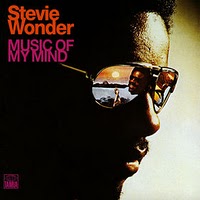 This fully deserves to be held in just as high esteem as the rest of Stevie’s 70’s discography. Totally stunning music and it must have been a total shock to soul lovers ears on release. The music at the time was futuristic in the extreme. Utilizing the synthesizer to full effect to create a unique sound to go along with the supremely catchy and uplifting songs. There is really no weaknesses to this record. If there is any downside it is that Stevie doesn’t seem to realise quite what he has unleashed and so there is a little too much experimentation in places. Is there a better Stevie song than “Superwoman”? If there is I have yet to hear it. Get this and everything up to Songs In The Key of Life and you have some serious soul music to fall back on. –Jon
This fully deserves to be held in just as high esteem as the rest of Stevie’s 70’s discography. Totally stunning music and it must have been a total shock to soul lovers ears on release. The music at the time was futuristic in the extreme. Utilizing the synthesizer to full effect to create a unique sound to go along with the supremely catchy and uplifting songs. There is really no weaknesses to this record. If there is any downside it is that Stevie doesn’t seem to realise quite what he has unleashed and so there is a little too much experimentation in places. Is there a better Stevie song than “Superwoman”? If there is I have yet to hear it. Get this and everything up to Songs In The Key of Life and you have some serious soul music to fall back on. –Jon
New Order “Low-Life” (1985)
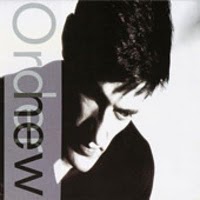 One of New Order’s great subtext is the notion that these band members don’t like each other. Low-Life is a typical New Order record, a 50/50 mix of guitar rock and mechanical dance tracks built around synths and table-top boxes, but it stands out to me for excellent songwriting that hints at genuine emotion restrained by an unwillingness to emote in front of those people. Lyrically uncommitted and passive, this is the sound of a band at a creative high with A+ material, trying to keep the sneer hidden behind a stiff upper lip. High points for me are “This Time Of Night” and “Sub-Culture” (the latter of which was a dance club hit) both of which juxtapose the deadpan with cinematic, sinister hooks. –Cameron
One of New Order’s great subtext is the notion that these band members don’t like each other. Low-Life is a typical New Order record, a 50/50 mix of guitar rock and mechanical dance tracks built around synths and table-top boxes, but it stands out to me for excellent songwriting that hints at genuine emotion restrained by an unwillingness to emote in front of those people. Lyrically uncommitted and passive, this is the sound of a band at a creative high with A+ material, trying to keep the sneer hidden behind a stiff upper lip. High points for me are “This Time Of Night” and “Sub-Culture” (the latter of which was a dance club hit) both of which juxtapose the deadpan with cinematic, sinister hooks. –Cameron
Ronnie Lane “Anymore For Anymore” (1974)
 Out of all the albums that I’ve heard this is the one that has touched me the most. It’s such a joy to hear Ronnie Lane sing about unimportant things that, after a second listen, become the most important issues you can think of. Seemingly loose played, but at the same time heartfelt and pure. Music far removed from the standards of those days but at the same time so very timeless. Yes, this album means the world to me. If I had to describe “Anymore for Anymore” in one word it would have to be “love.” From the beautiful sax solo on “Don’t You Cry For Me” to those spine tingling strings on “The Poacher”, every track is a gem. The passion and sincerity with which it is crafted is of a standard previously unknown to me. This album will make you enjoy and appreciate life so much more. It’s simply brilliant and, in my opinion, essential listening for every roots/country/folk listener. –Ton
Out of all the albums that I’ve heard this is the one that has touched me the most. It’s such a joy to hear Ronnie Lane sing about unimportant things that, after a second listen, become the most important issues you can think of. Seemingly loose played, but at the same time heartfelt and pure. Music far removed from the standards of those days but at the same time so very timeless. Yes, this album means the world to me. If I had to describe “Anymore for Anymore” in one word it would have to be “love.” From the beautiful sax solo on “Don’t You Cry For Me” to those spine tingling strings on “The Poacher”, every track is a gem. The passion and sincerity with which it is crafted is of a standard previously unknown to me. This album will make you enjoy and appreciate life so much more. It’s simply brilliant and, in my opinion, essential listening for every roots/country/folk listener. –Ton


